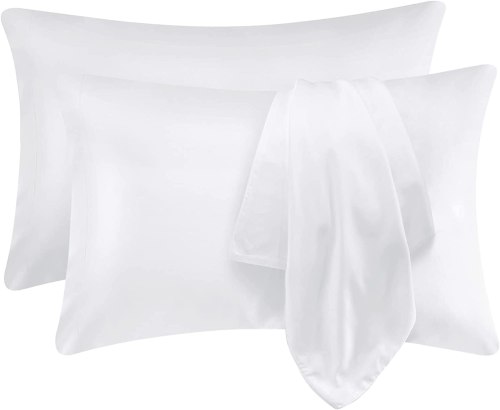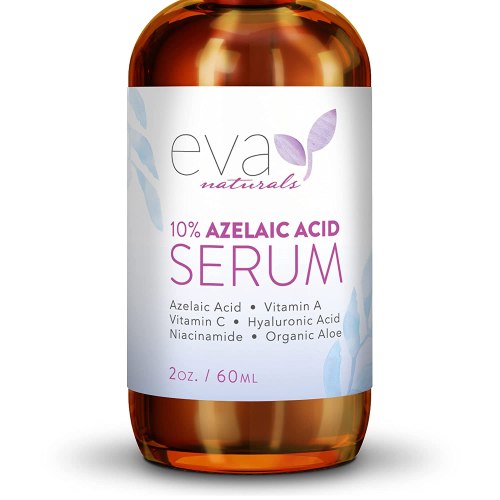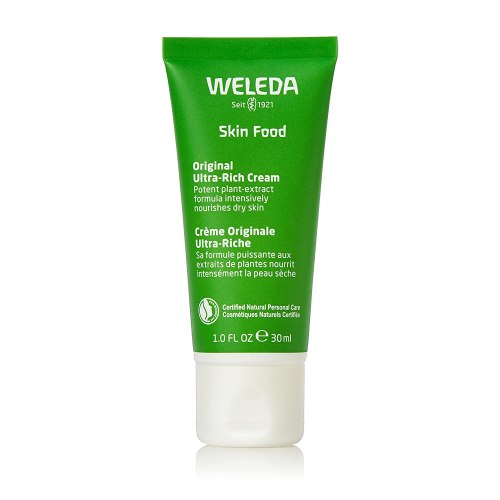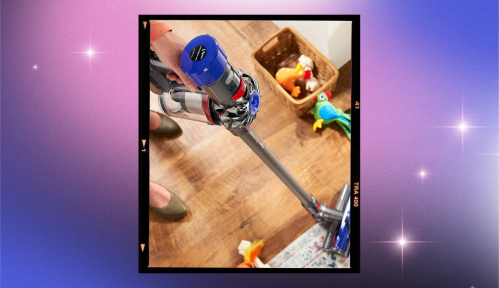Our editors independently select these products. Making a purchase through our links may earn Well+Good a commission
When my cheeks started to break out, I first blamed the pandemic. With the advent of COVID and work-from-home, I had let my morning face-washing lag, and on the rare occasions I left the house, I wore a face mask—so I assumed the angry little bumps blemishes caused by laziness and the humidity dome under my KN-95. While this was a perfectly reasonable hypothesis, the problem didn’t go away when I got strict with my skin hygiene, and the bumps came and went regardless of mask use. Then I started to notice patterns: These bumps came with alcohol use, heat, and the week of my period, and were most prominent on my cheeks and near my eyes.
As I later learned, these “breakouts” weren’t actually breakouts at all—they were perimenopausal rosacea.
Perimenopause comes with many surprises (seriously, how come no one told me about the apocalyptic mood swings?), and rosacea is yet another fruit in the veritable cornucopia of its annoying symptoms. The skin condition is characterized by redness, papules, pustules, and swelling, and can be triggered by hormones, heat, and anxiety—which explains why the hormonal shifts (and hot flashes) women experience throughout perimenopause and menopause can cause it to flare up. It’s one of a number of skin conditions that can occur during this time, including acne, dryness, and thinning, but due to poor education and stigma, most women have no idea what to expect.
Because I felt so blindsided by rosacea (and other perimenopause symptoms), I’m passing along what has worked for my skin.
1. A gentle routine
Because rosacea is an inflammatory skin condition, “Using a cleanser that is too harsh or even using a product that is too drying may cause a flare in rosacea and increase inflammation,” says Rachel Nazarian, MD, a board-certified dermatologist based in New York. Some people with rosacea avoid face-washing, worried that it will dry out and irritate their skin, however, regular face-washing is generally recommended for rosacea sufferers to keep away bacteria and other environmental pollutants—it’s just important to make sure you find the right product.
Derms recommend looking for oil-based cleansers packed with nourishing ingredients and fatty acids, which will help hydrate and calm the skin—two things that rosacea-prone and perimenopausal skin needs from a routine, since the estrogen loss associated with menopause can cause dryness. I like Ethique’s Bliss Bar ($17), which has a simple formula and is affordable, cruelty-free, and plastic-free.

CozyLux 100% Organic Queen Bamboo Pillowcase (Set of 2) — $14.00
Before rosacea, I loved using alpha- and beta-hydroxy acids to exfoliate my skin, however, they are too harsh for me now. (Some with rosacea may still be able to use them, or may be able to use them on less rosacea-prone areas of the face). Instead of these harsher chemical exfoliants, derms often recommend azelaic acid to rosacea sufferers, as it tends to be gentler and more hydrating. There are several serums on the market that contain a soothing combination of azelaic acid, hyaluronic acid, and niacinamide; I use one from Eva’s Naturals.

Eva's Naturals Azelaic Acid 10% Facial Serum — $14.00

Ethique Bliss Bar — $17.00
Since hydration is key to caring for both rosacea-prone and perimenopausal skin, I layer my face with a combination of rosehip oil (which is lightweight, anti-inflammatory, anti-bacterial, and packed with antioxidants) and seal it in with Weleda Skin Food ($12), a super-rich but gentle balm loaded with Vitamin E and other moisturizing ingredients.

Weleda Skin Food Original Ultra-Rich Body Cream — $12.00
Finally, because rosacea can be triggered by UV rays and menopausal skin is more sensitive to sun damage, I never leave the house without SPF. I prefer a mineral formula, as chemical sunscreens have a history of irritating my skin. COOLA’s Mineral Sunsilk Creme ($42) is a moderately-priced, dewy SPF 30 option with a ton of hydration and almost no white cast once absorbed.

Coola Full Spectrum 360° Mineral Sun Silk Crème SPF 30 — $42.00
2. Keeping my hands *off*
Rough touch is a huge trigger for many folks with rosacea; my first flare-up came after a vigorous facial massage. With that in mind, when applying products to your face, be sure to use a light hand. Pat (don’t rub!) your skin dry, and apply makeup with your fingers if brushes irritate you. Some may find that silk or satin pillowcases are kinder to their face, however, I find them too slippery so use a bamboo pillowcase instead. I also change my pillowcase every few nights to keep bacteria off my face while I sleep.
3. Identifying triggers
There’s a long list of things that can trigger rosacea, but dietary factors can play a huge role. Hot and spicy foods, caffeine, hot beverages, dairy products, chocolate, and certain spices can all cause flare-ups, and I’ve found that alcohol in particular leads to breakouts in my own skin. These triggers can differ from person to person, so pay attention to your diet and tweak it accordingly if necessary.
Because I have multiple inflammatory conditions (hashtag blessed), I try to eat as many anti-inflammatory foods as possible, such as berries and leafy greens. I also drink several cups of green and ginger tea daily and take a turmeric supplement. It’s unclear how much this helps, but by throwing a preponderance of anti-inflammation ingredients at my skin via my gut, it seems to help.
4. OTC medication
Ask your doctor first, but taking a non-steroidal inflammatory aid (NSAID, like ibuprofen or naproxen) can help reduce the viciousness of a rosacea breakout. Antihistamines (such as fexofenadine or cetirizine) can also help reduce redness, itchiness, and severity of bumps.
Sign up for the Well+Good SHOP Newsletter
Get exclusive deals on wellness, beauty, fitness, and food products that have been hand-picked by our editors.
Got it, you've been added to our email list.











